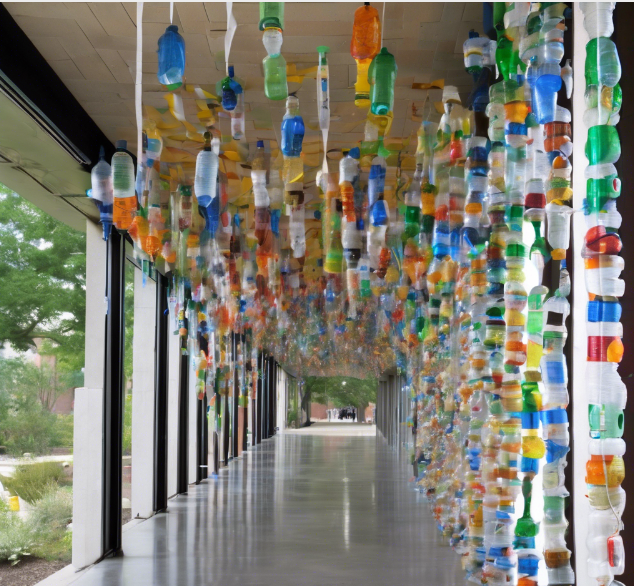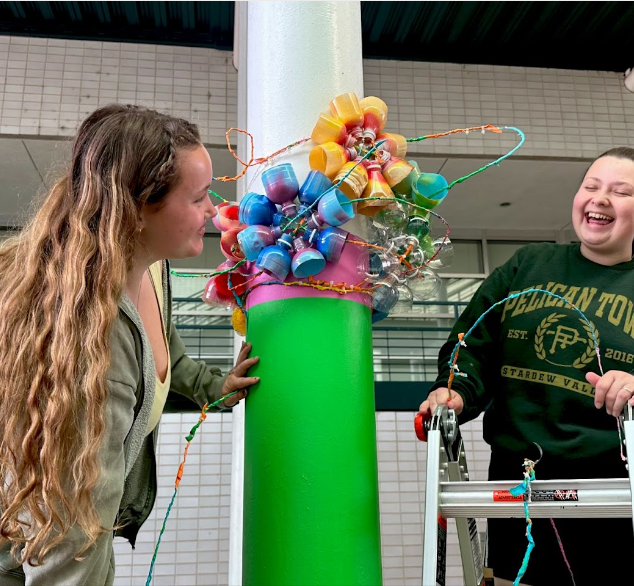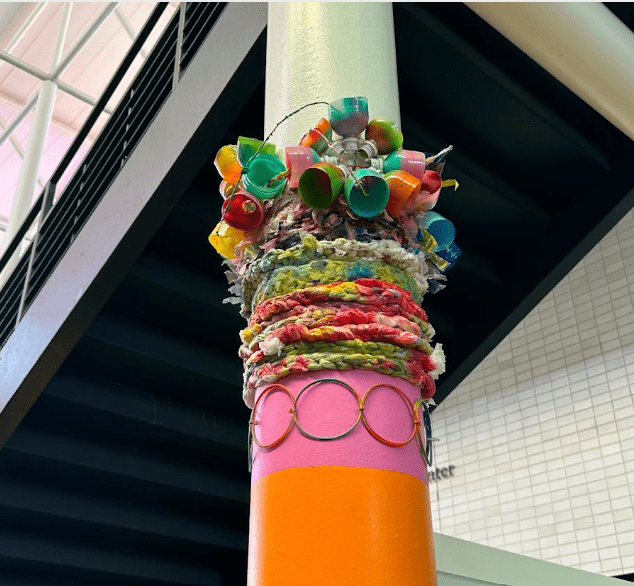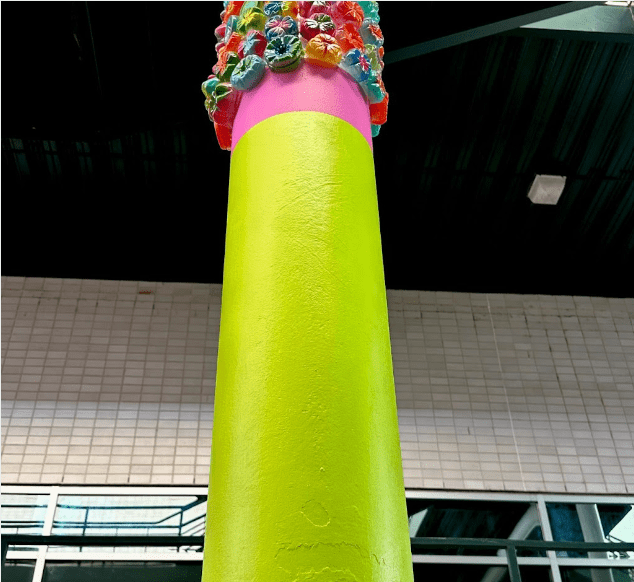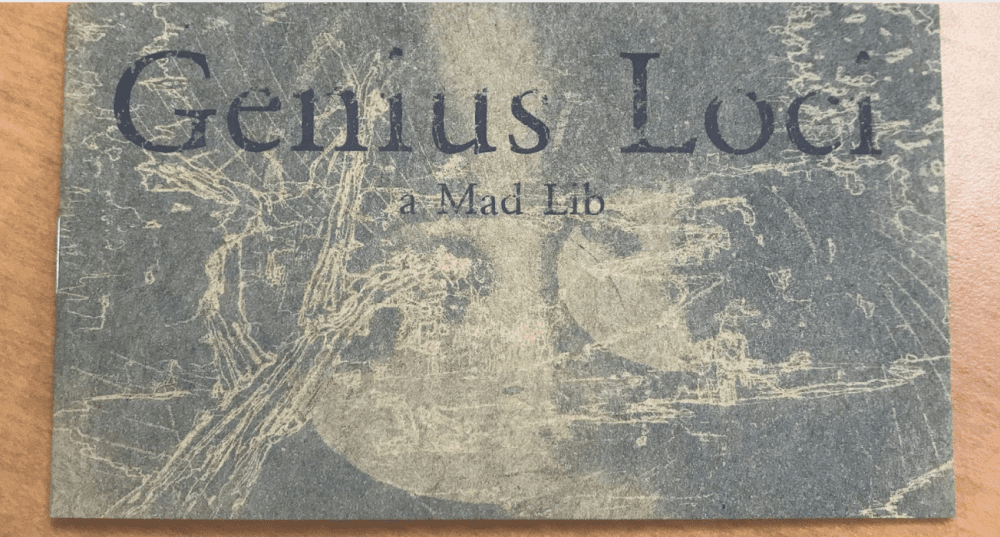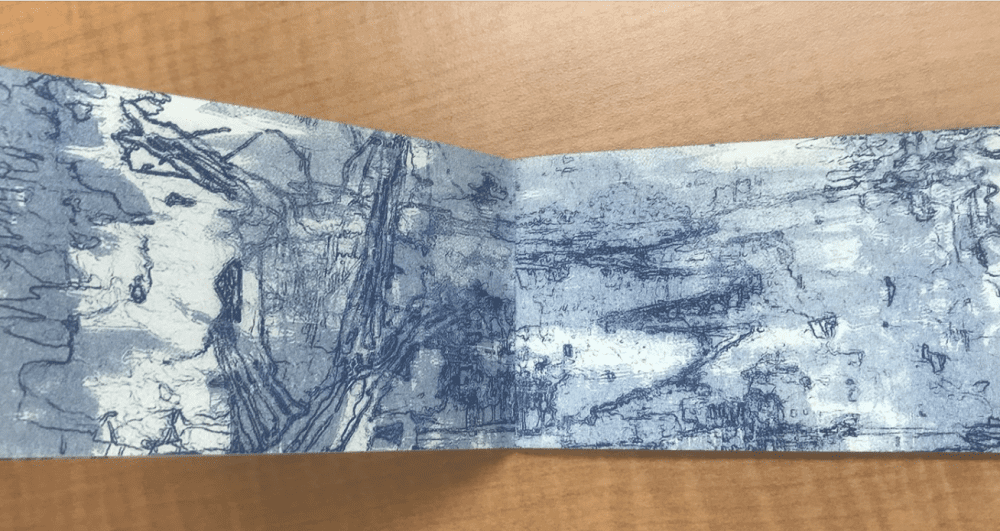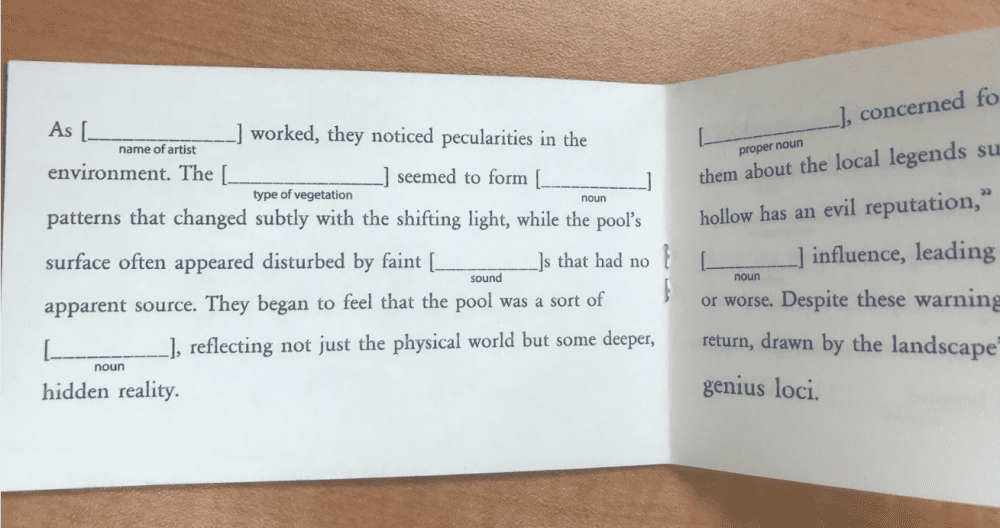Bridging Tradition and Innovation: AI and Print Media

Bridging Tradition and Innovation: AI and Print Media
Story curated by Erik Waterkotte & Sabri Gokmen (COAA)
– Erik Waterkotte
Erik Waterkotte is a professor of print media whose career spans traditional techniques such as woodblock printing, screen printing, and photomechanical processes, alongside modern digital methods. Deeply rooted in fine art, his work explores the dialogue between analog craftsmanship and digital innovation. Passionate about the cultural and religious significance of images, Erik has long been intrigued by the roles that abstraction and representation play in conveying complex ideas. This foundation not only informs his personal art practice but also shapes his teaching and research endeavors in the realm of creative media.
EMBRACING DIGITAL TOOLS TO ENHANCE CREATIVITY
Over time, Erik began integrating digital tools into his creative process. He experimented with AI-powered platforms like Dream Studio and ChatGPT to transform simple textual prompts into visual concepts. “I use ChatGPT quite a bit to start writing proposals and outlining applications,” he explains, noting how these tools help him overcome the initial creative hurdles. For Erik, AI is not meant to replace human ingenuity; rather, it acts as a spark that ignites creative exploration. When students first encounter AI, many see it as a shortcut or even “cheating.” However, Erik encourages them to view it as a starting point—a way to brainstorm, visualize ideas, and ultimately bridge the gap between concept and execution.
Generated sample images using Dream Studio for “A picture of a burning bowl ritual with two figures”
Collaborative Projects and Classroom Innovation
Collaboration is a key aspect of Erik’s journey. A memorable collaboration with visiting professor Russell Miller from Kingston University showcased how AI could be integrated into mixed media projects. In a mural project at Colvard, the students used Dream Studio to generate multiple visual variations, translating their ideas from written prompts to preliminary sketches. This not only provided an immersive learning experience but also demonstrated the direct correlation between language and image generation. Erik’s classes now incorporate these brainstorming sessions, where students use AI as one of many tools to articulate and refine their ideas. This approach not only nurtures creativity but also prepares them for the evolving demands of the creative industry.
Brainstorming ideas using AI for a pop-up installation in Colward Breezeway
Installation process and Orange and Lime Green Columns
Philosophical Reflections on AI and Creativity
Beyond its practical applications, Erik delves into the philosophical dimensions of AI in art. Captivated by its potential to democratize creative expression, he also recognizes the challenges it poses to traditional notions of authorship and originality. “If AI can generate a design from a simple prompt, it challenges us to ask—what is truly unique about human creativity?” he reflects. Drawing inspiration from a Werner Herzog film reminiscent of the “cave of dreams,” where early cave paintings reveal the profound depth of human expression, he observes that while AI can rapidly synthesize data and produce images, it can never capture the raw, tactile quality of handmade art. For him, these limitations are not drawbacks but opportunities that enhance the value of the human touch, compelling artists to push their creative boundaries and engage more deeply with their work.
Genius Loci, Zine Series, Erik Waterkotte
Looking Ahead: A Future of Creative Collaboration
Erik envisions a future where AI becomes an integral yet balanced part of creative workflows. He sees AI as a catalyst for innovation in both artistic practice and education. In administrative tasks such as proposal writing and grant applications, AI helps streamline processes, freeing up more time for creative endeavors. Yet, he remains firm that the core of art—its ability to convey unique human insights—cannot be fully replicated by a machine. For Erik, the goal is to integrate AI into teaching in a way that challenges students to refine their creative visions while still valuing traditional techniques.
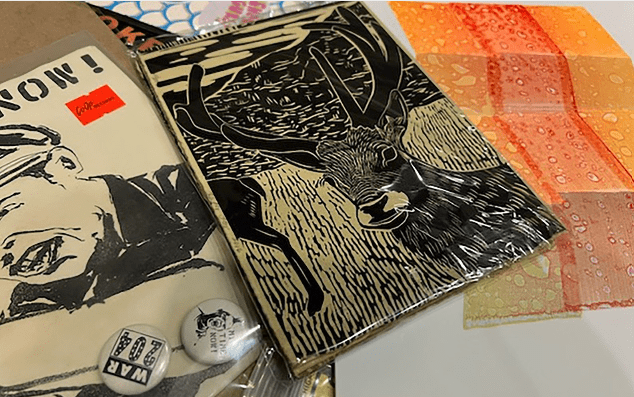
Intermission edits, Erik Waterkotte

Fabulation Prompts, Cover and Interior, author: Matt Garite, published by Theurgical Studies Press: Ben Gardner/Erik Waterkotte
In his own work, Erik continues to explore the interplay between digital and analog methods. Whether it’s publishing zines and short stories with AI-generated elements or experimenting with generative art to develop new visual vocabularies, he remains committed to a philosophy of “creative collaboration.” His journey exemplifies how embracing AI can expand the creative process rather than diminish it. By engaging critically with new technology, Erik Waterkotte not only enriches his own artistic practice but also inspires his students to reimagine the boundaries of print media and visual art.
Story curated by Erik Waterkotte & Sabri Gokmen (COAA)
Text and Conversations edited using AI.
